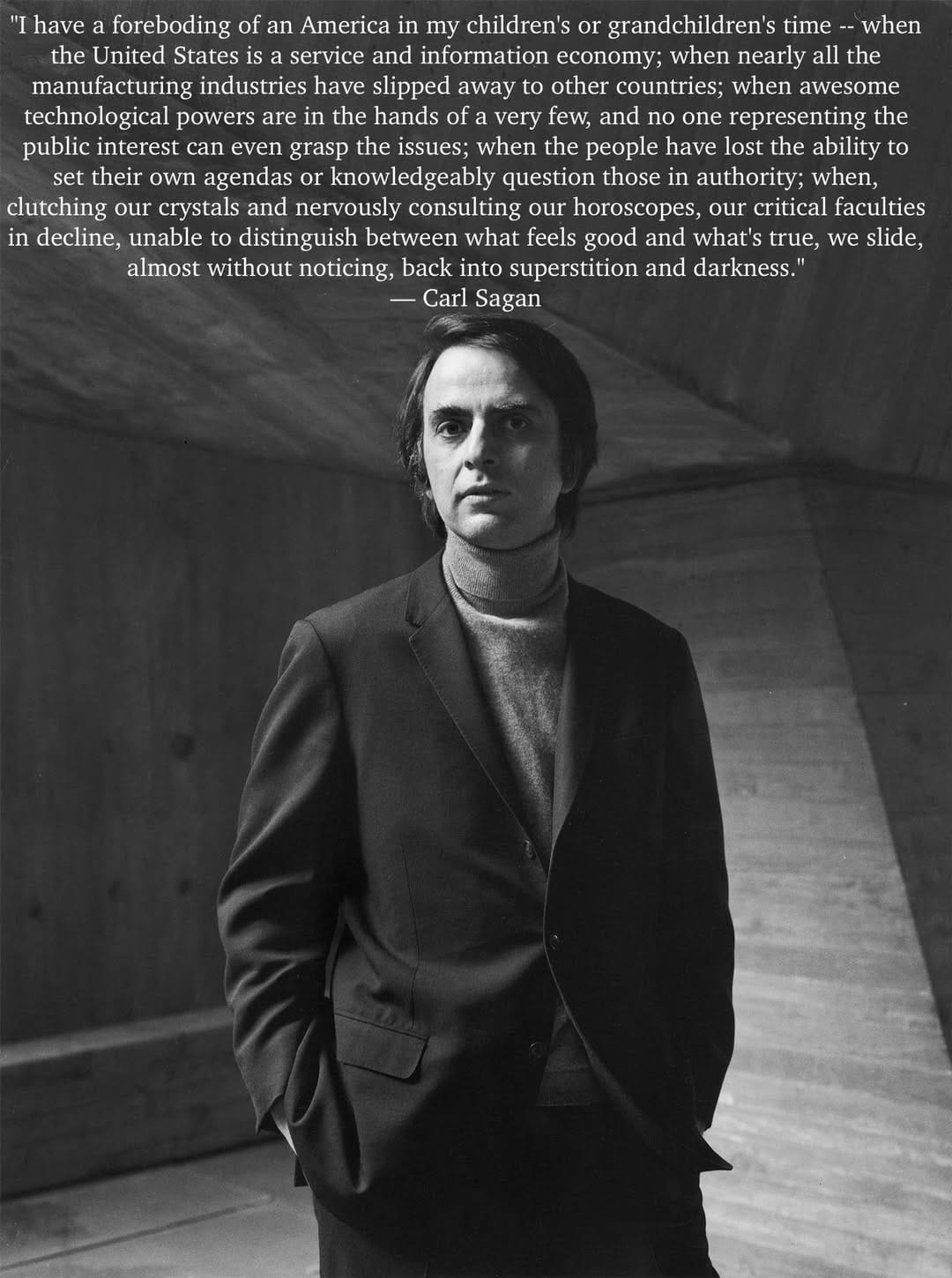Starstuff: Remembering Carl Sagan
Carl Sagan would have turned 91 today. He invited us not merely to look up, but to understand what we saw, to marry awe with evidence.

“We are a way for the cosmos to know itself.”
Carl Sagan would have turned 91 today. For millions who first met him through Cosmos or the pages of The Demon-Haunted World, his voice remains a beacon — calm, curious, and utterly unwilling to surrender wonder to superstition. He invited us not merely to look up, but to understand what we saw, to marry awe with evidence.
1 · A Voice for the Ages
Sagan’s gift was not just that he knew the universe — it was that he could make the universe knowable. At a time when science often felt remote, he made it intimate: hydrogen burning in the hearts of stars, atoms forged in supernovae finding their way into human hands. To watch him speak was to feel that curiosity itself was sacred.
2 · The Scientist and the Storyteller
Sagan stood at the crossroads of data and poetry. His strength lay in showing that the scientific method is not a cold calculus but a disciplined expression of wonder — humanity’s way of asking questions the universe can actually answer.
The method begins, he reminded us, with humility: the admission that we do not know. From there come the essential steps:
- Observation — noticing patterns without assuming meaning.
- Hypothesis — crafting an explanation that can be tested, not merely believed.
- Prediction — defining what results would support or refute that idea.
- Experimentation and Evidence — confronting imagination with reality.
- Revision — the readiness to change one’s mind when nature disagrees.
To Sagan, this was not an abstract ritual but a moral stance — a safeguard against both arrogance and despair. It was, as he wrote, “a candle in the dark,” the only reliable antidote to credulity and fear. He understood that the method’s power lies not in certainty, but in its capacity for self-correction. Science advances because scientists are willing to be wrong.
In Cosmos, he embodied that ethos. He moved effortlessly from the speculative to the empirical, never forgetting that evidence is what transforms curiosity into knowledge. His narratives soared precisely because they were tethered to truth.
3 · Defender of Reason
Long before “misinformation” became a headline, Sagan warned of a time when critical thought would erode under the weight of media spectacle and political convenience. The Demon-Haunted World was his field manual for skepticism — not cynicism, but disciplined doubt. “If we are not able to ask skeptical questions,” he wrote, “to interrogate those who tell us something is true, to be skeptical of those in authority, then we’re up for grabs.”
His call was civic as much as scientific: democracy depends on citizens who can weigh evidence.
4 · The Moral Cosmos
Sagan’s compassion was as vast as his curiosity. He saw our fragile world suspended in darkness and demanded we protect it. The Pale Blue Dot photograph became his moral text: every saint and sinner, every nation and creed, every child and conqueror — all of it on a mote of dust. From that perspective, borders and hatreds appear absurd. What remains is duty: to one another and to the planet that made us.
He championed nuclear disarmament, climate responsibility, and scientific literacy not as policies but as survival strategies for an intelligent species. “The Earth,” he said, “is where we make our stand.”
5 · Legacy and Lessons
Sagan’s influence still echoes through the voices of Neil deGrasse Tyson, Ann Druyan, and countless educators who see storytelling as part of science itself. His insistence that beauty and truth need not be rivals reshaped how we communicate discovery. Cosmos didn’t just popularize science; it re-enchanted it.
Even the new generation of planetary scientists — probing Mars, mapping exoplanets, listening for technosignatures — follow trails he helped blaze. The questions he raised about life, consciousness, and meaning remain the scaffolding for our modern cosmic dialogue.
6 · Starstuff and Responsibility
Sagan never asked us to worship the cosmos; he asked us to take responsibility for our place in it. To look at the night sky is to feel both infinitesimal and indispensable. We are, as he said, “starstuff contemplating the stars.”
On this birthday, the best tribute is not nostalgia but participation: to keep asking questions, testing ideas, and defending reason against the tide of unreason. Wonder, after all, is the beginning of wisdom — but evidence is its completion.
